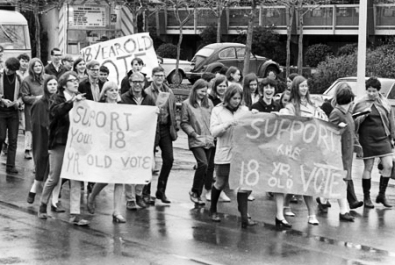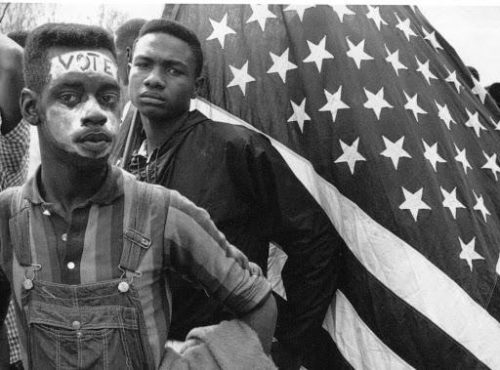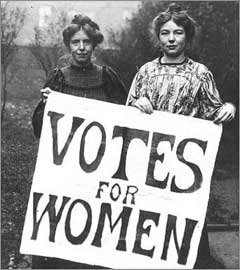Most of us were educated with a simplistic view of history in which the United States steadily evolved from denying the vote to all but wealthy white men to becoming ever-more inclusive. In truth, U.S. voting history is far from linear. Despite inspiring movement toward democracy globally, the U.S. was among the last countries in the developed world to enfranchise women and people of color, and hard-won advances have been interspersed with defeats at the hands of opponents of democracy — many of them them clearly racist. Reclaim Democracy believes understanding our history more fully will help convey the need for eternal vigilance in defending our rights.
Just 10 years passed between 2006, when not a single Senator opposed strengthening and extending the Voting Rights Act (enthusiastically signed into law by President George W. Bush), and the 2016 election of a President whose Administration and party openly embraced vote suppression as an electoral strategy. Even before 2016, the Supreme Court was steadily eroding voting rights and led by a Chief Justice deeply rooted in voter suppression.
We hope presenting the defeats American democracy has suffered alongside our victories may better illuminate our complex history and the fragility of our rights. We’ve come a long way, but we have much further to go. The Right to Vote: The Contested History of Democracy in the United States by Alexander Keyssar is our primary source and recommended read for those who wish to dig deeper.
U.S. Constitution (1787). Contains no federal voting rights. States decide who enjoys the privilege of voting: land-owning white men aged 21 years and older. Presidential elections are made explicitly anti-democratic, and slave states are given disproportionate power in selecting the President.
Less-Wealthy White Men Gain the Vote (1792-1856). As more states join the original 13, less-wealthy white men are enfranchised starting with New Hampshire in 1792. North Carolina is the last state to remove property requirements in 1856.
Religious Requirements End (1828). Maryland becomes the last state to stop mandating Christian conformity in order to vote.
Civil Rights Act of 1866. All people born in the U.S. now enjoy birthright citizenship although not necessarily voting privileges.
15th Amendment (1870). Citizens can no longer be denied the vote based on race. Despite the Amendment, discriminatory practices were used to prevent Blacks from voting, and Indigenous people remain voteless.
SCOTUS Denies Women the Vote. (Minor v. Happersett,1874)
Virginia Minor argued that under the 14th Amendment equal protection clause, the U.S. Constitution established women’s right to vote — one that could not be denied by the State of Missouri. The Court rejected the argument, ruling that while women are “persons” under the 14th Amendment, states remain free to deny women the vote.
SCOTUS Excludes Native Americans Excluded from Voting (1876 and 1884)
The Supreme Court rules (1876) that Native Americans are not citizens with protections of the 14th Amendment and voting rights. The Court went even further in disenfranchising Native American in Elk v Wilkins (1884). Read more on the evolution of native voting rights.
Direct Democracy Emerges (1898). South Dakota becomes the first state to enable citizens to make law via initiative and referendum.
Women Can Vote in Wyoming (1890). Upon statehood, Wyoming is the first to enfranchise women. Men outnumbered women 6:1 at the time of passage, so destination marketing may have played a role!
19th Amendment (1920). The vote no longer may be denied on account of sex. This victory followed at least eight decades of concerted grassroots organizing including the Seneca Falls Convention of 1848.
Indian Citizenship Act (1924). Grants Native Americans citizenship and voting privileges without disavowing their tribal affiliation, but 40 more years passed before Native Americans could vote in all 50 states. Learn more about barriers to Native voting.
McCarran-Walter Act (1952). Seventy years after the Chinese Exclusion Act of 1882 blocked people of Chinese ancestry from becoming citizens. Asian immigrants are permitted to become naturalized citizens and vote.
24th Amendment (1964). Payment of poll or other taxes cannot be a requirement to vote.
Voting Rights Act (1965). Barred many forms of voter suppression and required states with a history of suppression tactics to get Congressional approval before enacting new voting laws. (SCOTUS revoked this key provision in 2013, see below).
26th Amendment (1971). The minimum voting age was reduced to 18 years.

Beer v United States (1976) Without asserting any guarantee of representation for people of color, the Court rules the V.R.A. prohibits changes in district mapping that constitute a backward step “retrogression” for a minority group’s rights.
Voting Accessibility for the Elderly and Handicapped Act (1984). Accessibility of polling places is mandated.
National Voter Registration Act (1993). Congress requires states to make registering to vote reasonably convenient.
Shaw v Reno (1993) SCOTUS rules that although district mapping may take race into account, and must meet the provisions of the Voting Rights Act, race cannot be the predominant factor in creating districts.
Bush v Gore (2000). While the immediate impact was to select George W. Bush the winner of a disputed election, overlooked was the 5-4 SCOTUS majority explicitly declaring citizens have no right to vote for presidential electors. The majority says Florida’s legislators could ignore citizens’ votes and cast electoral votes as they wished. Also in 2000, federal courts deny voting rights to citizens in Washington D.C. and U.S. territories.
Help America Vote Act (2002). Established federal voter protection standards and strengthened election integrity after mass disenfranchisement and irregularities in 2000 led to a disputed presidential election outcome and the SCOTUS selecting George W. Bush as the winner (Bush v. Gore).
Shelby County v Holder (2013). Despite Congress reauthorizing the Voting Rights Act (VRA) by an overwhelming majority (unanimous in Senate), five SCOTUS Justices strike down Section 5 of the VRA. This provision prevented states with histories of voter suppression from enacting new election laws without federal approval (known as preclearance). SCOTUS essentially gutted federal protections and enabled states to deny established rights to millions of Americans. Several states immediately passed or implemented policies that previously were blocked.
Rucho v Common Cause (2019). In 2016, North Carolina Republicans re-drew Congressional districts and turned a near-even split between Democratic and Republican voters into a 10:3 Republican advantage in seats. A federal court struck down the gerrymander on multiple violations of the U.S. Constitution. On appeal, five SCOTUS Justices reversed, claiming challenges to partisan gerrymandering present “political questions” the federal judiciary lacks authority to adjudicate, no matter how unequally citizens are treated.
Allen v Milligan (2022) In a shift away from its trend toward empowering states to freely disenfranchise voters, the court ruled that Alabama violated Section 2 of the VRA by drawing districts that deliberately minimized the voting power of Black citizens.
Moore v Harper (2023) In 2022, the North Carolina Supreme Court ruled congressional districts drawn by the GOP-controlled legislature were an unconstitutional gerrymander and assigned neutral experts to create a fair map. The GOP argued the U.S. Constitution’s Elections Clause gives them power that excludes judicial review. SCOTUS rejected that absurd argument, but deserves no credit for giving the dangerous “Independent State Legislature” scheme a serious hearing.
The Voting Rights Advancement Act and John R. Lewis Voting Rights Advancement Act would restore many key VRA provisions the SCOTUS invalidated in Shelby along with adding protections for voters and election integrity. See our 2023 summary or read in-depth analysis from Brennan Center for Justice on the FTVA and VRAA.
Other Resources
- The Missing Foundation for Democracy: An Affirmative Right to Vote
- 50 Ways to Disenfranchise and Suppress Voters
- Whose Vote Counts? A Netflix documentary series on voting rights
- So what is the Voting Rights Act?


